“[Ross’s] devil-may-care demeanor, hip Williamsburg filmmaker act could seem like armor. Underneath … was this mushy, soft sweetheart,” said Stephan Apicella-Hitchcock, head of Fordham’s visual arts program at the Lincoln Center campus. “He is the last person who would want to be put on a pedestal. But these characters who come into your life … they become your family, and it’s quite impossible to imagine a world where he’s not padding around [Fordham] in his Chuck Taylors.”
‘The Muse Was Life; the Medium Was Film’
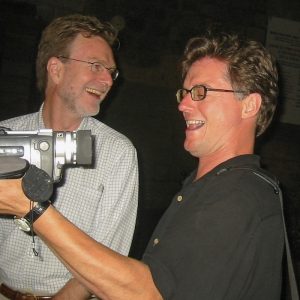
McLaren taught film and media production to Fordham students as an artist in residence. His work, which has been described as “abstract,” “playful,” and “ironic,” has been featured in Fordham’s annual faculty show at the Ildiko Butler Gallery. McLaren often left interpretation of his art up to his viewers. “The kind of artwork I like [is]not nailed down by the artist’s definition,” he once said.
The art that he truly loved, said his colleague Joe Lawton, was experimental non-narrative independent cinematic film.
“He had great knowledge of Walt Disney cartoons, Hollywood films, et cetera, but his real passion was the descriptive and inherent equalities in the idea of film itself,” said Lawton, associate clinical professor of photography. “He was also curious about … life itself. The muse was life; the medium was film.”
Unconventionally Living Cura Personalis
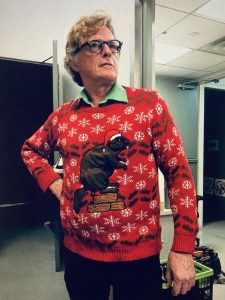
As a faculty member, McLaren wasn’t keen on volunteering for administrative tasks, said Apicella-Hitchcock, but he never hesitated to help out his students.
“I would find him assisting a student one-on-one on how to load Super 8 film into a projector, way beyond his afternoon class. In an odd, quirky way, in his anti-establishment personality way, he embodied cura personalis,” Apicella-Hitchcock said.
McLaren was an “unconventional” professor who encouraged his students to challenge existing norms and think outside the box, said former student Luke Momo, FCLC ’19. He also helped his students improve their craft by pinpointing the deeper meaning behind their self-produced films, said Momo, who noted that’s just what McLaren did when he attended the premiere of Momo’s first feature film, Capsules, at a Manhattan film festival last year.
McLaren gave his students gifts beyond filmmaking, too. “When I was in undergrad, I wasn’t [able to laugh at myself]. I had a lot of pride,” Momo said. “Being more honest and vulnerable…some of those emotions are things that Professor Ross gave me.”
Other former students said McLaren’s vision of the world made them think.
“Ross said once, ‘How strange it is that we sit in dark rooms and watch shadows on the wall to find meaning within ourselves,’” a former student commented on a tribute post. “That always stuck with me.”
A ‘Goofy’ Friend with a Parrot and Two Turtles
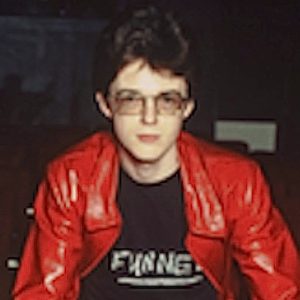
McLaren was born on December 4, 1953, in Ontario, Canada. He earned his M.F.A. from Ontario College of Art and taught at many institutions, including Cooper Union and Pratt Institute. His work has been screened at institutions worldwide, including MoMA in New York City and the British Film Institute Southbank in London, and found a permanent home in many art institutions. He received multiple honors, including the Millennium Achievement Award for his contributions to the arts and education. In addition, he founded Funnel Film Theatre in Toronto, an underground film collective active in the 70s and 80s that one writer recently described as “the most important locale for experimental film in Canada.”
He lived in his loft apartment in Williamsburg, Brooklyn, where he enjoyed growing plants on the rooftop; spending time with his beloved parrot, Fwankie; and sunbathing with his two turtles, Flotsam and Jetsam, who had the privilege of their own kiddie pool, said Apicella-Hitchcock. He was also a big hockey fan.
From a distance, you might have assumed he was a “goofy wisecracker, a little cynical and sarcastic,” said Apicella-Hitchcock, but at his core, McLaren was a “thoughtful, warm, and loyal friend.”
McLaren is survived by his brother, Gary McLaren, and his sister, Catherine McLaren. A memorial in McLaren’s honor will be held on Feb. 16, 2024, at 6 p.m. at the Lincoln Center campus’s Lipani Gallery, where several of his films will be screened. Contact [email protected] for more information.
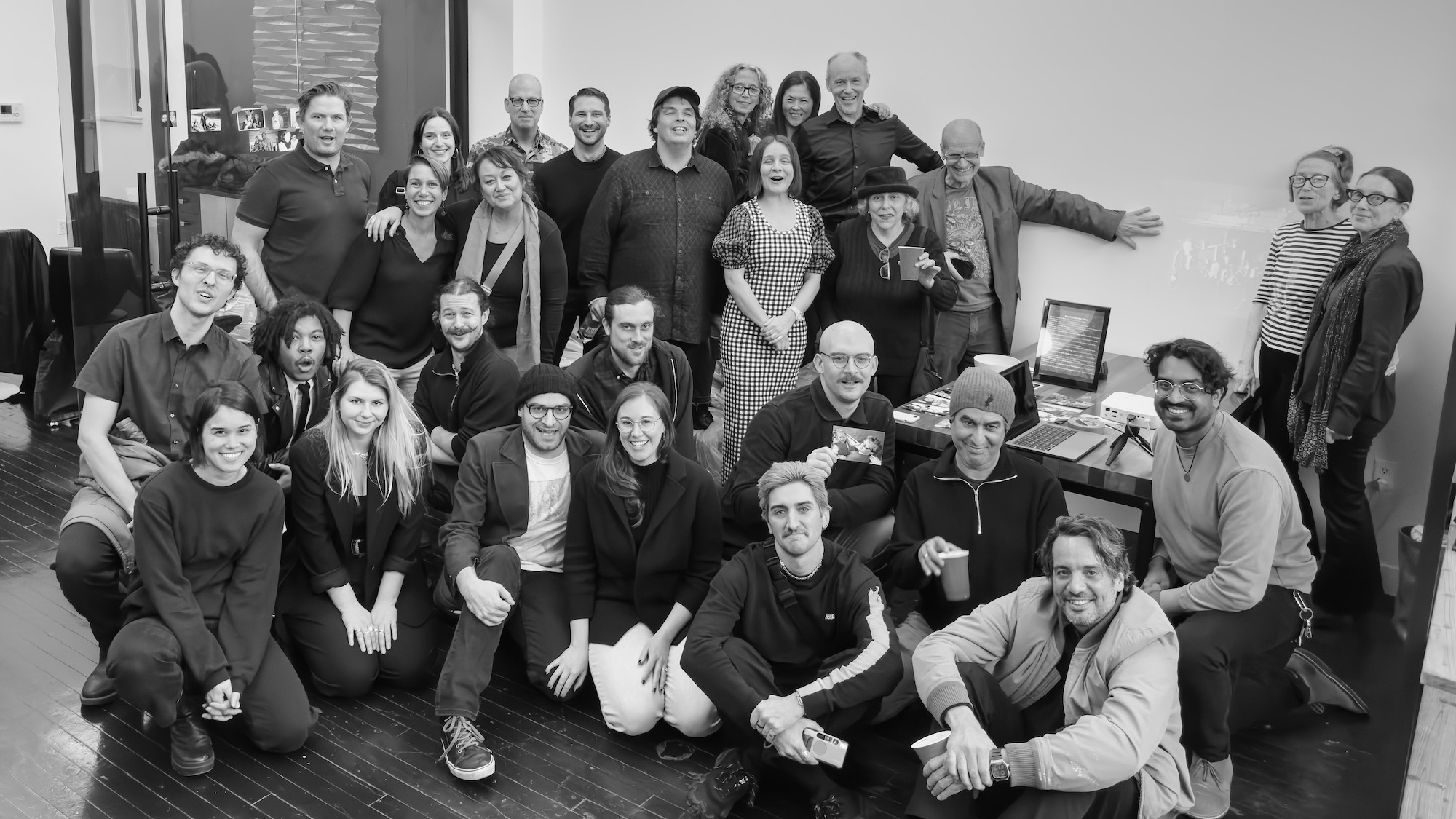

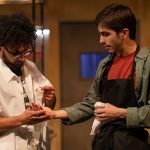
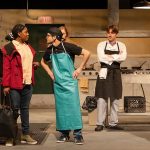

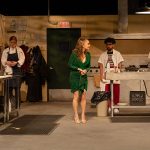

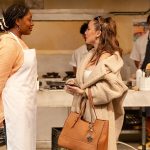
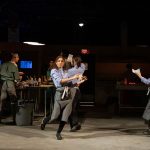
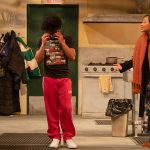

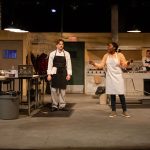
 The final mainstage production of the year takes place in the kitchen of a New York City restaurant, where the staff juggles, dishes, orders, and dreams of a better life.
The final mainstage production of the year takes place in the kitchen of a New York City restaurant, where the staff juggles, dishes, orders, and dreams of a better life.
Raekwon Fuller, a senior at Fordham College at Lincoln Center (FCLC) from Anderson, South Carolina, credits acting with giving him a community in his hometown, where he often didn’t feel welcome as a gay black man.
A’ryee McGirt, an FCLC senior from Hollis, Queens, didn’t join the theater program until her sophomore year but has since seen her love for acting grow.
And Katie Heaton, an FCLC senior and a Brooklyn native who briefly rebelled against the field her father found success in as a playwright, has since fallen in love with set design.
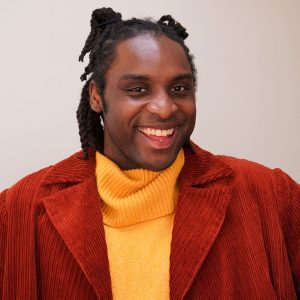
Photo by Taylor Ha
Each of these students has a lead role in La Cocina, the final mainstage show of the year by Fordham Theatre. The play, which is directed by Alex Shaw and written by interim director of playwriting Tony Meneses, was inspired by Arnold Wesker’s 1957 production The Kitchen. It tells the story of the back of the house of a New York City restaurant kitchen, where cooks and waitstaff juggle orders, dishes, and their own dreams of a better life. The production opened on April 13 and runs through April 22,
Fuller, who coincidentally plays a character named Ray, said the show–his last at Fordham since he is a senior— is the culmination of a time of real-life self-exploration for him.
“When I was in high school, I found fellow African American students in the theater program, and they really helped me cultivate my self-love,” he said.
“I’ve been trying to continue that through Fordham by exploring the depths of my sexuality, my personality, and my Blackness, and really trying to incorporate that into any artistic process that I’m in.”
In Ray, he found a character who is a leader and stands up for his community, he said. Fuller has fewer lines than in previous mainstage roles, which he actually views as an opportunity for growth.
“What makes a successful actor is no matter how big or small your line is, you’re going out there like you were given the ‘I Have a Dream’ speech by Martin Luther King,” he said.
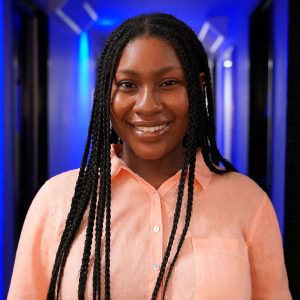
Photo by Taylor Ha
When McGirt first enrolled at Fordham, she commuted over an hour from Queens. Unlike peers who’d auditioned for the program their senior year in high school, she spent that year as an undecided major. She successfully auditioned her sophomore year.
“Growing up, I didn’t have that much exposure to theater, so I’m very thankful I’ve been able to study a lot of classical and contemporary plays. My love for theater has just grown,” she said.
In La Cocina, McGirt has her first big role as Monique, who is a new manager of the kitchen. The job is actually a step down for Monique, which makes the character more complex, and for McGirt, also more appealing.
“I love that Monique is a leader. No one really teaches her anything; she’s kind of just thrown into this chaos and she has to work with what she has,” she said.
Heaton, a double major in theater and visual arts, said she was drawn to La Cocina as a set designer because it’s a contemporary production that deals with today’s issues.
“There is something exciting about being able to really explore current themes with social justice,” she said.
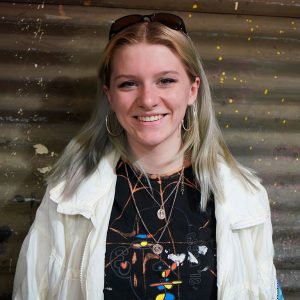
Photo by Taylor Ha
After working on smaller shows, it’s her first opportunity to supervise a mainstage production. In this case, that meant the construction of a lifesize, industrial kitchen.
“I’m grateful for it because it’s made me feel a lot more prepared for the actual world of set design,” she said.
Meneses, the playwright, said working with students has made the play better.
“A play is such a collaborative thing, where you have this version in your head of how a line may sound or how a moment may look,” he said.
“What’s fun is when an actor or director or designer does something so unexpected and different than what you thought it was, and it’s actually better.”
La Cocina continues with shows at 8 p.m. Wednesday, April 19 through Friday, April 21, and 2 and 8 p.m. on Saturday, April 22.
—Video by Taylor Ha
]]>Lien recently spoke to Fordham News in Pope Auditorium—the same space where she designed a set for a Fordham production more than a decade ago—where she reflected on her career and the semester ahead.
How did you get into set design?
I studied architecture as an undergrad. At that time, I didn’t know much about theater, but I was interested in thinking about space in a more conceptual and sculptural way, and then applying that framework to an architectural context that exists in real space with real people. While exploring how architecture can tell a story, I stumbled into set design.
What is it about set design that you’re passionate about?
Set design is really central to a theater production because it establishes a physical world. You can have this world that is like a laboratory for life. It can be completely surreal or fictional. It’s a way to create really complete worlds that might be something that you haven’t encountered before, something that’s a little strange—something that moves you.
What’s something about set design that most people don’t know about?
One of my favorite things about being a set designer is searching for materials that suit a performance’s design objective and intention. What kind of material can create this image or illusion within the needs and confines of a theatrical stage and performance? Most of the time, those materials are not designed for how I’m going to use them, so I get endlessly amused while looking for industrial materials that were made for a different purpose. For example, I might be looking for something that’s shiny but also lightweight, or something that looks like falling ash. One time, I created a huge pile of red sweeping compound for a production of Macbeth, which represented internal organs of the body. I wanted it to be red because, obviously, there are a lot of references to blood in Macbeth!
What brought you to Fordham?
I’ve actually worked here before. Sixteen years ago, I designed the set for a production of Top Girls, which was directed by Erica Schmidt. But it was May Adrales, the new head of the Fordham Theatre program, who brought me in as the Denzel Washington Chair. May and I have collaborated together on a number of projects in the past. One day, she emailed me and asked if I would do it, and I thought it sounded amazing.
What are you most excited about doing here?
Fordham has really well-rounded and solid training in theater. I’ve met alumni who studied directing, design, and production, and everyone is really well-trained and grounded with a solid foundation in theater. I’m excited to challenge the notions of what theater and performance can be and really put design forward in that conversation. It’s something that I think a lot about in my own work, and I’m excited to share that with the Fordham community.
I just had my first class today, and my students all seem amazing. Most of them are fourth-year students, so they have already been through foundational design training, and I have a good mix of students from different disciplines. I’m excited to have people with a range of experience because what I want to focus on in my class is not so much the nuts and bolts of set design, but the conceptual ideas behind design and how we can push the envelope. I have structured my course to focus on designing for performances through a more architectural lens because that’s my background and how I have approached design. I feel like the key components of thinking about space architecturally, like scale, volume, materials, light, and sequencing of spaces, are all things that you might learn in architecture school, but they’re also totally applicable to theater design.
For their first project, my students need to find a site on campus and then conceive of a performance that might take place in that site. So I’m also training designers to think about being conceivers of an event, too, and not necessarily responding to a script. I want to treat design as more of a holistic theater-making discipline, as opposed to, here’s where I fit into it.
What professional projects are you working on?
I just returned yesterday from opening an opera at the San Francisco Opera, which will run for the next few weeks. It’s a new John Adams opera, Antony and Cleopatra, using the Shakespeare play as the libretto, along with a few other sources. Now I’m in the midst of finalizing the design for a new revival of Sweeney Todd on Broadway, which has just been announced.
How do you feel when you reflect on your life’s work?
I feel incredibly blessed, lucky, and privileged to have been able to create projects on some of the scales that I have. Every project has a whole different set of circumstances, and therefore a whole new set of things to learn about and research. I’m excited to continue working in the avenues that I have worked in, as well as revisit my architectural roots and branch out into public art projects outside the theater. But mostly, I feel like this chair is such a gift and an opportunity to give back a little bit and to share some of what I’ve learned and encountered on my journey, even though there’s still a lot to learn.
What advice do you have for the next generation of theater makers?
What constitutes a performance? Space, event, and spectators, but that can happen anywhere … inside a theater, but also a street. As long as you have some action that’s happening and somebody who’s watching it, it could be defined as a form of theater. But what’s amazing about theater is that anything is possible. The reason that I transitioned from architecture to theater is that in the latter world, you have the magic of illusion. You can do things like figure out how to rig a piece of concrete so that it appears to be floating. So my advice to students is to be tenacious. Pursue the impossible, because in theater, anything is possible.
This interview has been edited and condensed for clarity.
]]>This year’s graduates faced months of uncertainty as the COVID-19 pandemic shuttered college campuses across the country in March 2020. Even when they returned that fall, many of their classes were still being held online. And face masks became a part of everyday life.
Dawn Saito, an associate clinical professor in the Fordham Theatre program, and Christopher Koenigsmann, Ph.D., an associate professor of chemistry, witnessed firsthand the resilience that students exhibited in those four years.
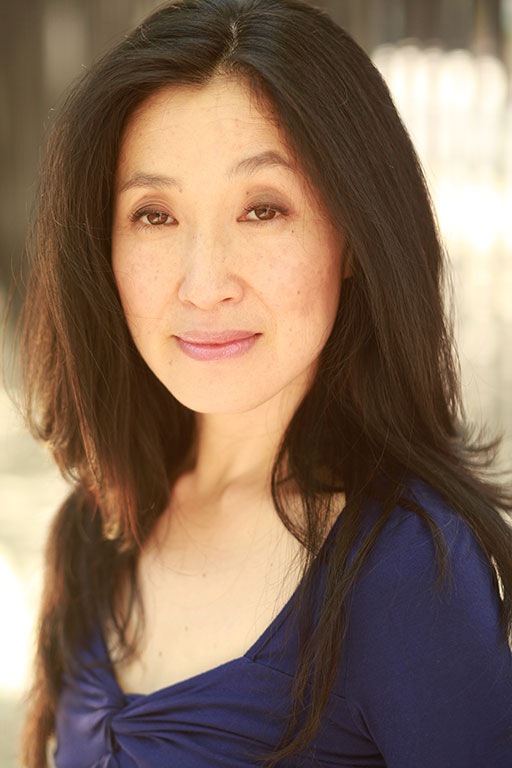
“It was really a profound time for discovery and an exploration of how to continue to be creative,” said Saito, who teaches acting and movement classes.
“I had not seen their faces during the rehearsal process, so it was even more poignant, because of the sacrifices, to get to that place.”
At the height of the pandemic, when classes were all virtual, acting students had to learn techniques associated with acting for film, instead of stage, because film acting could be done on video. They learned how to incorporate graphics and animation. When they returned to in-person instruction, they had to figure out how to do scene work with half their face covered by a mask.
“I think the scene work that they did really was quite profound and still had a tremendous impact, because not only do actors use their faces, they use their intentions as characters and physical impulses to tell stories,” she said.
When the program resumed mainstage performances in the fall, students rehearsed with masks on, but took them off for shows. “These students found ways to adapt to every situation. They were on Zoom, and then they were masked, and then, thankfully, they could take them off,” she said. When they did, she said, there were gasps in the room.
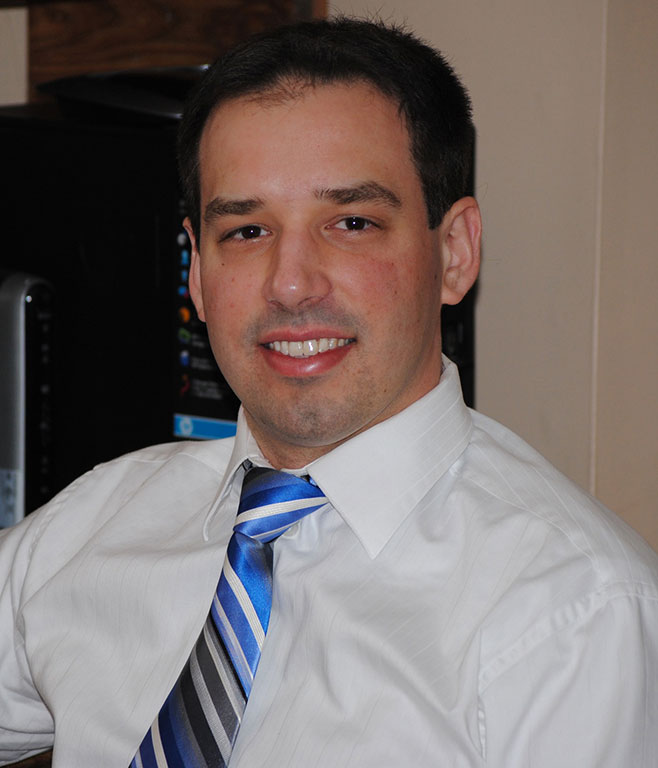
Koenigsmann has been working on research with three graduating seniors—Julia Mayes, Ian Dillon, and Rosario Troia—since the fall of 2020. Like their theater counterparts, they had to adjust to working in a lab, then at home, then back in a lab. Through it all, they were able to contribute to the research of Koenigsmann’s lab, which is focused on creating atom-size structures that can be used to detect glucose.
“Chemistry research is fundamentally a hands-on thing. It requires you to go into a lab to produce samples and to test them,” he said. “During the summer of 2020, even I was like, ‘What are we going to do?’ We figured it out.”
Essentially, the students flipped the research process. While labs were off limits, they used the time to conduct a literature review, which brought them up to speed on what others had learned from conducting similar experiments. When they returned to the lab last spring, they were fully ready to pair that knowledge with experiments. They still had to learn how to make samples in the lab, but Koenigsmann said they were able to share that knowledge with their younger colleagues, which was extremely beneficial.
“When something is written on paper, that’s great. But there’s a lot to be said about having a senior student there with you and giving you tips. You know, ‘don’t do it this way, do it like this,’ or ‘here’s this helpful extra little step that maybe I didn’t write in the procedure,’” he said.
The paper that will feature the results of the students’ research will be published a little later than planned, but the fact that they were able to pivot and still contribute is a testament to their resilience, Koenigsmann said.
“These students were at the forefront of basically reinventing the wheel.”
]]>Full transcript below
J.D. Lewis: The eureka moment was in an English class. We were talking about The Merchant of Venice and we were talking about Portia, and the teacher said, “So you have to consider Portia as being a girl in a boy’s body, acting like a boy.” I was like, oh, that’s me. And so that was essentially the point at which I realized this is what my gender is.
Patrick Verel: When President Obama’s Department of Education issued guidance in 2016, that schools should allow students to use the bathroom that matches their gender identity, it was hailed as groundbreaking by supporters of transgender rights. But when Donald Trump took office in 2017, it only took a month for his administration to reverse course. Fast forward to 2021. Joe Biden reinstituted the guidance, and efforts to lift up and support people who identify as non-binary continue. In June of that year, for instance, the state of New York began offering the option of an X gender to anyone who did not identify as male or female. The federal government followed suit in September, allowing people to choose it on their passports. For those of us who are old enough to remember when President Bill Clinton signed the anti-gay Defense of Marriage Act in 1996, it’s fascinating how much things have changed. Over the last few months, I’ve talked to Fordham folks who have had insights to share in the topic of gender, either because of their work, their personal experience, or both. I’m Patrick Verel, and this is Fordham News.
When I first met J.D. Lewis, a professor of biology at the Calder Center in 2011, they had presented as male. At an event in 2019, Lewis presented as female. We recently sat down to talk about that journey.
Now, you told me that you realized something was different about you when you were four years old, right?
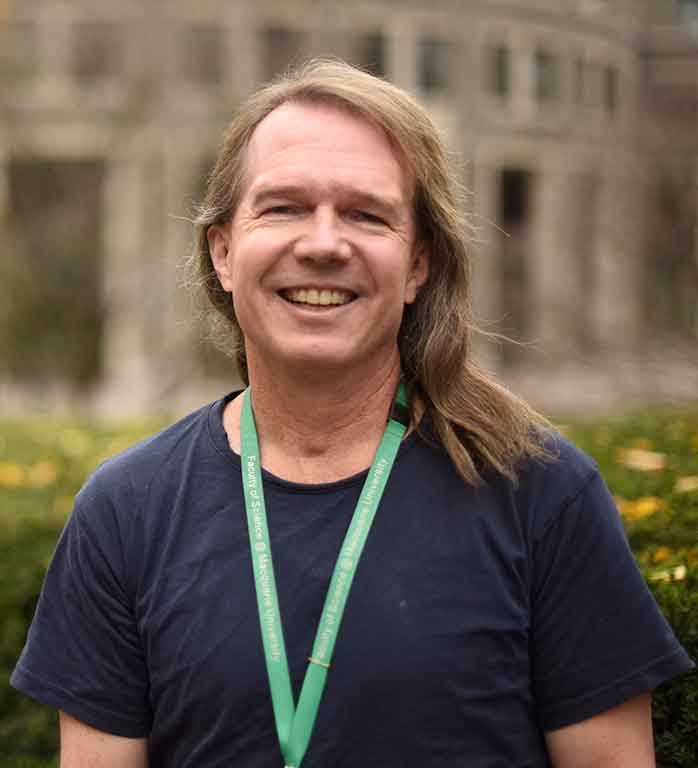
JL: Yes, that’s correct. And so two big events both occurred at the same time. I discovered my profession and I discovered my gender in one day. And it happened when my mom’s older sister was visiting us. And she is a professor, and so she was my motivation to become a professor. And at the same time, I realized, oh, I’m a girl. And at the time, I didn’t think much of it. I’m four years old, and I just figured this is something that happens to everyone. And as I got a little bit older, I start to realize that I didn’t just feel like a girl, but that I kind of fit somewhere in between. And again still assumed this is how everyone felt. And by the time I was starting middle school, I realized, oh, this is pretty unique. And I have to admit that, at the time, because I identified more as a girl, I was hoping that puberty would give me a different body than I have right now and that I would end up having a girl body to go along with my sense of being a girl gender.
And again, at the same time, we didn’t have the language to be able to explain that, and so it was really difficult for me to be able to convey to other people what I viewed as my gender. And it was difficult for other people to tell me what they viewed as. And so, kind of the Eureka moment was in an English class, we were talking about The Merchant of Venice and we were talking about Portia, and the teacher said, “So you have to consider Portia as being a girl in a boy’s body, acting like a boy.” I was like, oh, that’s me. And so that was essentially the point at which I realized, this is what my gender is. Yeah.
PV: So at the same time that you figured out what you wanted to do with your life, you figured out who you were as well. That’s a lot for being four.
JL: It was. And of course, just like my gender, my ideas of what I wanted to be professionally shifted over time. But ultimately, obviously, I ended up becoming a professor, and in fact, that was partly because of my gender identity. I wanted to pick a field where I would be able to be comfortable with the way I dressed, so I knew I couldn’t work in the business world, because I am not comfortable in a suit and tie. And I wanted to be able to work in a field that was less gender-biased, for lack of a better way of putting it, than most of the STEM disciplines. And botany, at the time, was a field that was more open and welcoming to people who were not male. And so that’s how I ended up, partly, as a botanist and how I ended up as a professor.
PV: Really. So that influenced your choice even within the sciences.
JL: Yes, very much so. And then one other part about that is I was really interested in plant reproductive biology because plants can be whatever they want. You can have male flowers, you can have female flowers. You can have plants that produce male flowers some years and plants that produce female flowers some years. You can have flowers that are both male and female. You can have flowers that are male and have other flowers that are male and female on the same plant. You can have plants that have female flowers and male flowers at the same time. I’m like, this is perfect. This is me.
PV: Wow. Okay. That’s amazing. So that’s, what an interesting… and obviously you’ve stuck with it. It’s worked well for you.
JL: It has.
PV: Yeah. What changed for you between 2011 and 2019?
JL: Good question. And I think two things really were what made me change, how I approached this. And one was we had a better sense of what terminology we could use to describe our experiences. And so the idea of gender fluidity, for example, that term became much more commonly used. People started to understand what it meant. And so people could start to use it to identify how they felt because other people would understand what it meant. So I think that was part of it. And another part of it was working with students who were concerned about representation. And I had a meeting with one of my grad students who was lamenting the lack of representation of certain groups. And I realized that I needed to do a better job of representing, that it wasn’t just enough for me to be supportive and to be effectively an ally. That because this is my experience, I needed to be my full self.
PV: Yeah. When was that?
JL: It was about six years ago now, around 2015.
PV: And how do you identify today?
JL: So as a biologist, I view gender from a non-binary standpoint. And obviously, I’m gender fluid, and so I fit within that category as well. But because when I was young, I didn’t identify with a specific gender, now I typically use the term either genderqueer or agender to identify myself.
PV: So I think there’s this assumption that if you feel, as you do, that you aren’t the gender that you are assigned at birth, that you would naturally gravitate towards transitioning, either with things like hormones or with surgery. You’re not interested in that, right?
JL: So I think for a lot of people who are trans in whatever way that they’re trans, transitioning is clearly a critical part of being who they are, right, being their full self. And gender affirmation surgery, clearly, is really important, and hormone therapy can be really important. I think for me because I don’t identify with a specific gender, it makes it difficult for me to decide what I would transition to. And because for me, the fluidity is, okay, so I’m feeling more like a girl today, or I’m feeling more like a boy today, that also makes it pretty difficult to decide what to transition to.
And then another aspect of it is that I’m already fairly androgynous in terms of my build, and so my face is fairly masculine and obviously my voice is fairly masculine. But if you look at the proportions and I’m trying to buy clothes, then women’s clothes actually fit me better than men’s clothes do. And so even before I was open and out, I mostly wore women’s running gear, for example, because women’s running gear just flat out fit me better.
PV: What’s it been like since you decided to be more open about your gender?
JL: So there’s been a lot of support, which has been really nice, and I feel for the most part very welcome. One of the interesting things for me was that, when I was younger, I would be teased a lot. And people assumed that my gender isn’t what was different, that it was my sexuality. And so I was called a fairy a lot when I was very young, and I was called a different F-word when I was older. And that was basically on a daily basis that I would get this. It was whenever I was out and people didn’t know me, I would get the F-word, and it’s like, oh, you think you’re so original. And what’s been interesting, since I started dressing more like how I feel about my gender, is most of those kinds of comments have stopped. I still get death threats, and riding on public transportation can be kind of challenging because you always get someone who’s looking at you like, you don’t fit in.
But for the most part, people have been really supportive, so it’s been really nice. And again, for me emotionally, it’s been much better. So I feel like I am being able to be my full self now, and I’m able to go about my day without worrying about how I look. And to be blunt, before I started dressing the way I dress now, every time I was out, I felt like, I look crazy. I look ridiculous. This is not who I am. Now I feel like whenever I go out, I’m like, I like how I look. I like that people see me this way. And so that’s been a big change as well.
PV: I’m sorry. I have to follow up on this. Death threats?
JL: Yeah. I get people riding on the train who, as they’re walking past, say things like, you’re an abomination, you should be killed, or you’re a Satan worshiper or whatever, right? And it’s kind of like with the F-word, it’s like, oh, you think you’re so original. So. And I actually have had people physically accost me. And so it goes beyond just words, but actually, physically accost me.
PV: And what about here at Fordham?
JL: So for the most part, people have been really supportive. It’s been really nice. It’s been a journey. And I say that because I realize for everyone around me, it’s been a journey as well, right? And so my transition, I try to do over a fairly… and when we’re talking about transition, of course, it’s not from a medical standpoint. It’s more as how I present or how I dress, it’s my hair length, it’s things like wearing makeup. And I realize that for a lot of people at Fordham who have known me for a long time, it is different. And so I realize that it’s been quite a journey for other people as well. And so I feel that my being able to be my full self is a testament to the fact that most of the people of Fordham are nurturing and encouraging about it and are supportive about it.
PV: Yeah. Yeah. That’s great to hear. That’s great to hear. I mean, it’s so disturbing to hear about these kinds of things. You talk about the public transit. There’s this idea that we hold ourselves to, in New York City, that we’re so enlightened, but you know that that’s not the case at all, in many settings with many people. So it’s disturbing to hear that, and I’m sorry to hear that. That can’t be easy, but at the same time, I can’t say I’m all that surprised.
JL: Yeah. And thank you. It is easier in New York, I feel, because New York is very much a you do your thing, I’ll do my thing kind of place, which I think is good in this kind of situation.
PV: That covers all the questions that I have formally written down.
JL: Mm-hmm (affirmative).
PV: There is one more though.
JL: Oh yeah, okay.
PV: That I’ve been thinking about, and that is to say your family. Is that something that you feel like you could talk about?
JL: Yeah. I’m willing to talk about that. My ex-wife and I are you get along… well, we co-parent our children pretty effectively. Our kids joke about us being essentially co-workers as parents because we both work together on it. And she’s asked how do I identify, because of course she sees me like this, just like everyone else does. And same answer, right. It’s just kind of like, I don’t really identify with a specific gender. And with my kids, a couple of my kids are queer, and they’re very comfortable with their queerness. And so I, in some ways I feel like that, again, it’s this idea of representation, that for me to be my full self is good for them, because it lets them know that there are people even in our family that are supportive.
PV: Talking with Professor Lewis gave me a great local perspective on the subject. So, for my next interview, I decided to expand beyond our borders. Sameena Azhar, an assistant professor at the Graduate School of Social Service works with Khawaja sira, a group of third gender people who have lived in communities in Pakistan since the 16th century. Did I say that right?
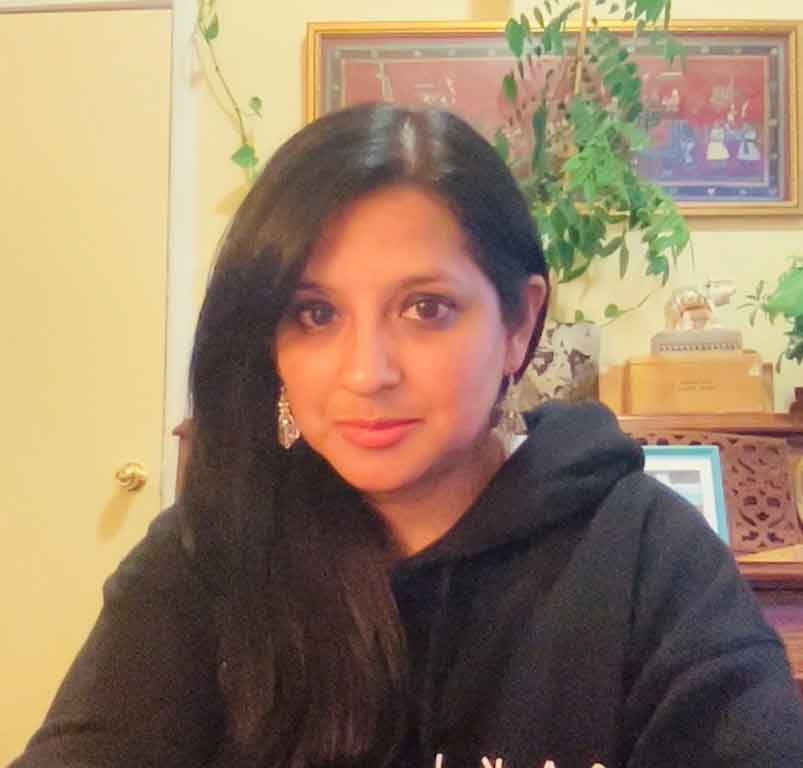
Sameena Azhar: Mm-hmm (affirmative).
PV: I did. Khawaja sira.
SA: Khawaja sira.
PV: Just rolls right off your tongue. Yeah.
SA: Yeah, yeah. And the accent is for the a, on the A at the end, so Khawaja sira.
PV: Sira. Oh, okay.
SA: Mm-hmm (affirmative). Yeah.
PV: So now, in my intro, I noted that in the United States, you can now pick a third gender on official documents. That’s old news in South Asia though. Why?
SA: Well, it’s not super old. In 2014, the Supreme Court of India allowed for the creation of a third gender. So rather than registering as an M or a male, or a F as a female, you can register as an E. So this third gender option. And similar policies have also been passed in Pakistan, Nepal, Bangladesh, not in Sri Lanka and Afghanistan, but the rest of those South Asian countries passed similar policies. Additionally, in India, Hijra are considered a scheduled caste.
So the scheduling of castes and tribes in India is a process that dates back to colonialism, and there were certain groups of people or communities that were considered to be scheduled as caste or tribes. And these individuals in modern India get a sort of affirmative action-style status by the government. So there are social entitlements that are available to them that are akin to welfare or food stamps, allotted seats in the representative government at the local level, so they’re called panchayats, so they’re reserved seats for people that are from these communities. So they’re pretty progressive actions to try to include these folks who are fully socially within South Asian society. And it’s a community that has been really gripped by both a long history of being honored and exalted, and also a long history of being marginalized.
PV: Now, I just spent a lot of time talking about the Khawaja sira and getting that correct, but you just referenced another group in India.
SA: Yeah. So, I mean, we’re basically talking about more or less the similar identities of third gender and gender-nonconforming identities. In India, the nomenclature is most commonly called Hijra.
PV: Hijra.
SA: Right. There’s other names for it in India as well, like Kinnar, Khusra, Aravani. There’s many names for this. In Pakistan, the name is Khawaja siras.
PV: What does colonialism have to do with all of this?
SA: So prior to British colonization, under mogul or Raj, but control, there was much more state-sanctioned support for these communities. So folks who were hijra or Khawaja sira would often work as courtesans or advisors or handmaidens in the royal court. And with the coming of colonization, the identity of being a hijra became criminalized. So in 1871, the Criminal Tribes Act made hijra criminals. And then additionally, Section 377 of the Indian Penal Code, which is borrowed from the British penal code, criminalizes what is called carnal intercourse against the order of nature. Right? So this essentially is interpreted to be homosexuality or more specifically sodomy.
PV: When you talk about these folks that embrace this way of being, are we talking about people who would typically be identified as male embracing femininity or vice versa?
SA: No, typically it is folks who’ve been assigned male sex at birth and identify as either women, or as men and women, or as a third gender person. It’s much less typical, I mean, pretty much, for the most part, doesn’t exist, to have somebody who was assigned female sex at birth, who may identify as a man and be called a hijra. So it is quite specific to what we would call in the West, trans women. But the third gender classification of E does encompass anyone, regardless of whatever sex was assigned at birth, to identify as E.
PV: And how does this all relate to what you do here at Fordham?
SA: So my research really began in south India. My family is from a city called Hyderabad. It’s where I did my dissertation research, so mainly looking at issues related to HIV and gender non-conformity stigma of people who are living with HIV, are HIV positive. And my work in Pakistan has been somewhat of an extension of that. I’m not focusing there on folks who are HIV positive. There’s also a much, much lower prevalence of HIV in that part of Pakistan, so my research there is focused on an area called Swat, which is in Khyber Pakhtunkhwaqua, and that is the northwest province that borders Afghanistan.
So it’s been a very interesting place to be doing research, first through the pandemic, but also through the huge influx of Afghan refugees that have come in the past several months. The focus of those interviews and surveys that we’ve been conducting in both India and Pakistan have been really around trying to figure out how to reduce these experiences of the stigma that people are encountering within their families, within their communities, within employment settings, within healthcare settings, knowing that these experiences contribute also to poor mental health, and most probably acutely to experience the violence or homicide against gender-nonconforming people.
So one of my participants, research participants in India had been murdered during our research, and it really just drives home that these are issues that impact people’s lives in very intimate and violent ways.
PV: Yeah. Yeah. Oh, man, that’s brutal.
SA: Yeah, yeah. Truly was.
PV: Daniel Alexander Jones, a professor of theater who performs under the stage name Jomama Jones, first introduced me to the concept of gender fluidity when I met him in 2013. Now, Daniel, Jomama has been a vehicle for you to try to get people to see both themselves and others in a new light. Do you feel like you’re seeing some of the changes you were hoping for?
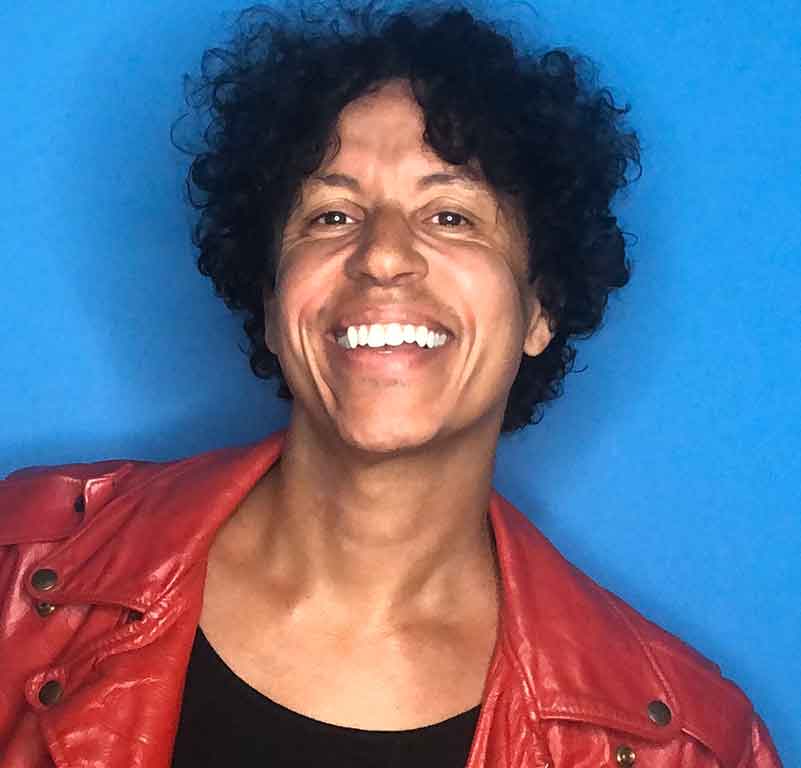
Daniel Alexander Jones: Oh, Patrick. That’s a good question. Yeah. I think were you to look at maybe 2010 and look forward at where we seemed to be heading as a nation, we’ve gone in a very different direction.
PV: Do you feel like there’s been a backlash?
DJ: There are people who believe their way of life is threatened by the changes that are happening, or even by, and this may be a more accurate way to say it, the naming of things that have always been there, but the taking up a space around those things, right? We know that those we call trans folk now have always been here, throughout history. This is not a new phenomenon, but it is culturally shaped in such a way that claiming sovereignty and truth and ownership of that identity is going to be a threat to someone for whom that identity’s invisibility is necessary for them to understand themselves, for them to feel their own sense of power, right? When you think about how that’s connected to the last five or six years of our national experience, it’s sobering.
PV: The last time we talked, you said that so much of the conversation about gender fluidity is about how we encounter someone who is different from ourselves, and what happens to us if we fully accept them. Can you elaborate a little bit on that?
DJ: This was originally, Patrick, from my perspective as an artist, because I was thinking about, both in my work professionally and also in the classroom, what role curiosity plays. The idea of engaging something you don’t know and being heightened or quickened or energized by the unknown, as much as you are by the process of naming and pointing out the things that you do know. And for an artistic process, whether it be writing or acting or directing, whatever the thing is, vital work depends on that curiosity. And it is that destabilization and the reaching for language to articulate what you’re feeling, the comparison of this new feeling to things you have experienced before. And also, if you will, the surrender into the possibility that that new experience has. All of those things are so necessary.
And what I began to encounter in the classroom, and what I began to encounter professionally even more so, was this sense of, we’ve got to name it and know it. What the problem is rooted in is a kind of taxonomical approach to life. Meaning that, if we think about taxonomy, we think about this idea of naming, delineating, putting things into categories. I’m thinking very often of those butterfly cases. Like those, the people who go out and collect them, and they pin the butterfly, and they name the butterfly, and there’s a sense that it is that thing. But we know that butterflies in life move. What they came from you don’t get in that pinned creature. So there’s so much of the story that’s missing from that pinned moment in time.
And then too, we then begin to think about exemplars of a particular group. Like this is what this type of thing looks like. And the connected part of that is we then begin to assume that something that looks like that, that has the same shape or form or the same name, will have the same content. Why? Well, in part we know it’s because our brain wants to filter out the things that are familiar so that we can pay attention to the things that aren’t. But I think the artist has a responsibility to deliberately engage what we don’t know, to deliberately destabilize what we think we know. It is part of our social responsibility.
And I think one of the things that this question around gender fluidity rubs at is that, if we live in a culture that has defined gender according to these formal shapes, whether they be shapes of thought or shapes of material of the body, we then eliminate the content. And that subjective content is the truth for that individual. So what does it mean that we would center a process by which I can have my observations, but I can’t then overwrite my truth of what those observations mean onto you before I get to know who you are, before I hear from you. Because as is so often the case, especially with folk who are dealing with expressing their own gender fluidity, very often what’s on the inside doesn’t match, quote-unquote, what’s on the outside. And so if I come to you and I have determined your interior by your outside, then I have done a violence to you.
PV: Talk to me about your own journey. How has your act changed since you started?
DJ: I was born into and raised in a worldview that was so profoundly shaped in the macrocosmic way by the civil rights movement, like the freedom movement and the workers’ movement, the grassroots movements that created the community I grew up in. Also, the courage of my parents who had an interracial marriage at a time where that was really forbidden, and the power of my community, which was a black community, working-class in western Massachusetts, that also was the house for a kind of multiethnic enclave. All of that to say that the culture that was born from that mixture of people, and that particular time, was in many ways set in opposition to the world that I entered when I started to go to school, which was a hierarchical world where race had a hierarchy, gender had a hierarchy, class for sure had a hierarchy.
So I had very early on to learn that I knew things about life that many of the people that I was going to meet in this other world didn’t know. And I also had to understand from a very early age, and I’m talking about memories from kindergarten, first grade, second grade, that many of the stories that were in that new world about who I was, about who my parents were, about who the people I loved were, were false. And I had to have the inner resolve, even before I had language to articulate it, to say, that’s not true. They don’t know.
And it’s when I became aware of my sexuality, and I understood that I was gay. What I understood is, just like I talked about those two different worlds, I could also look and say, oh, this is what is posited as being a boy or a girl or a man or a woman or… I could look at what the rules were supposed to be. So again, I came into this all at a time when I was looking around and saying, oh, wow, everybody’s playing this game. Everybody’s adopting these roles. And this person that I’ve known my whole life is now suddenly a jock or a girly girl or whatever. And I’m like, oh, it’s so interesting to see the person I know, take on and perform an extreme version of gender, as a way to get power, as a way to find their security, as a way to name themselves and be part of this larger configuration of students in this public high school.
And I knew it wasn’t me. So if I don’t fit any of these things, then the pressure, which I think is what a lot of young people face, is how do you conform? How do you figure out how to get access to or move in that system? Or the real danger, how are you taking that in, like do you try to fight your way back into the thing? And maybe the blessing and the curse that I had was like I told you, I had an experience and a bodily experience of something else.
One of the things that’s interesting, I’ve been teaching at this Jesuit university, and I hear a lot about the teachings of Christ. And I think one of the primary ideas is that you greet strangers as holy presences, that who you don’t know may be an angel. It’s your responsibility to take care of your fellow human being. Care means presence. Are you willing to be present with another human being? And I’m shocked always by how many people are unwilling to do that. I shouldn’t be shocked, but I remain shocked.
PV: Talking to Daniel shed light on how the culture is changing, but of course, culture can’t thrive if it’s not given the space to do so, which is the realm of law. For that, I turn to Elizabeth Cooper, a professor of law and the faculty director of the Feerick Center for Social Justice at Fordham Law School. Now you were involved in the passage of the Gender Expression Non-Discrimination Act or GENDA, a 2019 New York law that was originally part of a previous law that was passed in 2002.
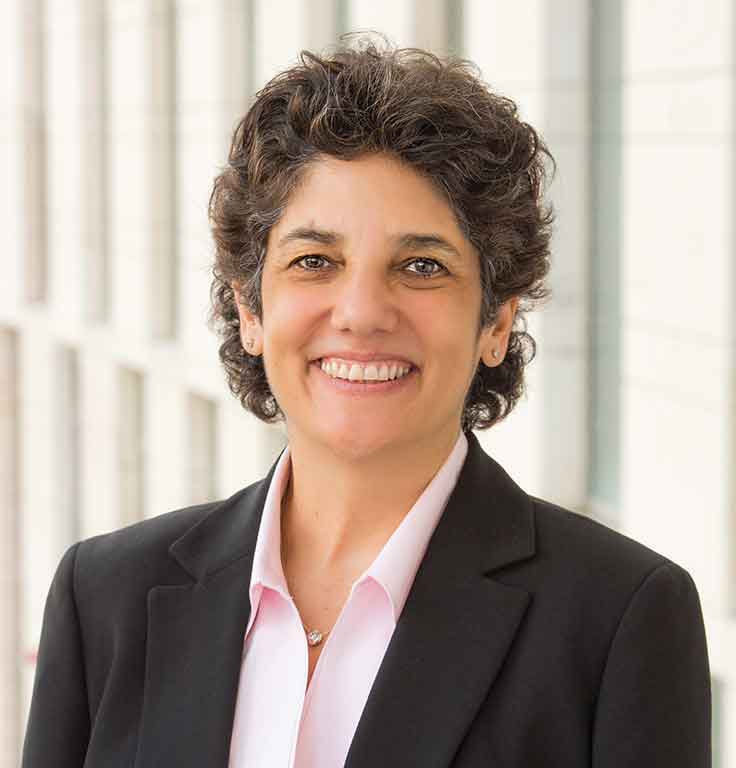
Elizabeth Cooper: I have had the real pleasure of being a member of and an advocate for the LGBTQ communities for many decades. And I remember very clearly when we were trying to get the Sexual Orientation Non-Discrimination Act, otherwise known as SONDA, passed through the state legislature. And there were a number of advocates that were trying to get the bill passed in its original form. And that would’ve prohibited discrimination based on sexual orientation, which is being lesbian, gay, bisexual, as well as on gender expression or identity. And those phrases typically refer to people who are transgender or gender non-conforming. The advocates were told that they could get SONDA passed, but only if they took out the protections for gender expression.
And the advocates agreed to do that with the notion of, we’ll come back next year, get the gender expression non-discrimination provisions passed. Well, it just so happened that SONDA was passed in 2002, became effective in early 2003, but it was not until 2019 that the Gender Expression Non-Discrimination Act actually was enacted. The law is so powerful, because it prohibits discrimination on the basis of gender identity or expression in employment, in housing, in places of public accommodation, in education, in countless areas, basically adding gender expression and identity to the long list of identities that cannot be the basis for discrimination in New York State.
PV: When it comes to the push and the pull of these laws, you’ve said that Jim Crow laws can be a helpful reference point. Can you explain why?
EC: If you think about Jim Crow laws or Title VII, which prohibits discrimination in employment, or the Americans with Disabilities Act, which prohibits discrimination on basis of disability, you have lots of prohibitions on discrimination based on an individual’s identity, their core identity, who they are. Historically, I think the Supreme Court often thought of these as immutable characteristics. Not all of them are so immutable, but they are basically aspects of identity that go to one’s core. They also have absolutely no impact on how well one can perform one’s job. So if you have a person who is an excellent lawyer, for example, it should not matter whether they are transgender or cisgender, meaning that their physiology and their gender identity aligns, cisgender. And so, why should we permit discrimination based on gender identity? It makes absolutely no sense. This has nothing to do, like race, like sex, like religion, with how one can do one’s job.
I think that thinking about this historical context is also helpful when we start to think about the ways in which some people argue that religion or biblical values mean that one should be able to discriminate against people who are lesbian, gay, bisexual, transgender, gender non-conforming, and so on. It’s important to look historically to the kinds of arguments that were raised against Title VII and other laws that prohibit discrimination based on race. For example, people argued that it would be wrong to have black people and white people in the same bathroom, that it went against the Bible, that there were risks of violence. There were people who argued that separation of the races was mandated by the Bible. And in this context, I think that we are getting to the point where we understand that gender identity or expression or sexual orientation, this is not a matter of choice or going against God or going against the Bible. This is just a matter of who we happen to be.
PV: It seems like people either are willfully ignoring history or just don’t know about it.
EC: I think most people don’t know about it. I think that the point is just to look at people for the value of, for example, employment, the job that they can do. Why would you ever want to tell someone who’s gender non-conforming that they can’t walk into a movie theater? Or why would it be okay or should it be okay for a doctor to say to a transgender person, I don’t want to treat you?
PV: You’ve been involved in this advocacy for 25 years with groups such as the law school’s LGTBQ student group. How have things changed within the movement itself in that time?
EC: I confess that I am just dumbfounded by the changes that have happened in my lifetime. And when I say dumbfounded, I mean in the best way possible. When I first started teaching at Fordham, I was concerned about coming out. I remember that the LGBT law student group sometimes met off-campus, so its members would not have to worry about being seen walking into a room where people knew that the gay group was meeting.
The attitude today towards lesbian, gay, bisexual, transgender, gender identity more generally, is just striking. I see law students and undergrads. I have a niece who’s 18 years old. I see her and her peers having a comfort with people who are different from themselves. And they don’t look at it as something that should require segregation. They look at it as something to learn about, and they want to embrace the richness of diversity in their lives. So you have straight people, like my niece, joining the high school Gay-Straight Alliance. You have kids coming out as teenagers in high school, sometimes middle school. You have people claiming their gender identity or presenting themselves in gender non-conforming or genderqueer ways much earlier on.
There is a real, tangible move away from understanding gender as a binary. There is a much greater acceptance, understanding and acceptance, that gender, like race, is very socially constructed. It’s not that men don’t typically have more testosterone and women typically have more estrogen, or we have different body parts, but that, in the way we present ourselves, some of our rules are arbitrary. Why should only women wear nail polish? Why should only women wear dresses? Why should only men wear ties and Oxford shoes, right? It has nothing to do with who you are and your core values as a human being. If anything, how much more wonderful this world is when people can be their full selves and live their full lives, whether it is with their families of origin, or in the workplace, or walking down the street in the middle of New York City or the middle of any other small town, anywhere in this country.
]]>
On Dec. 2, Tommy joined the theater faculty for a virtual town hall on Zoom, where she responded to questions about her acting class at Fordham, her first experience working on a major motion picture, and the ghosts that find their way into all of her projects. Clint Ramos, head of design and production, moderated the discussion. The following is an edited excerpt.
Clint Ramos: How has your experience [at Fordham]been so far?
Liesl Tommy: The students that I have been working with have brought me joy every single session. They embody the things that I value the most in artists, which is curiosity and passion. It feels like that rush that one gets from rehearsal, of being in collaboration, of being with inquiring minds.
CR: What were the important [lessons]that you really wanted for them to get?
LT: The lesson plan that I had set for myself for the semester pivoted quickly in the face of what I was receiving from the students, in the face of their needs. My class is Creating a Character, and I pivoted from a pure acting class to something that was more spiritual. What I focused on was them as artists. Who are they, what are their voices, what are their dreams for themselves? And how do we make concrete practice manifest those things, in this time of turmoil?
CR: You’ve had so much success in directing. Is there any part of you that wants to go back to acting?
LT: No. I think that once you turn the corner [and spend]too many years away from it, your body changes and your performance muscles shift. I was an extremely disciplined actor because I had come from a dance background. I was one of those people who if I didn’t have literally three hours of physical activity a day, I didn’t feel like myself.
Once I switched to directing, the gaze shifted away from me, and I felt like my energy shifted from my body into my head. My workouts became much more about stress relief than being in top physical shape. I still work on monologues sometimes as a self-soothing activity, just to keep the connection between language and thought alive. When I’m talking to actors about that, about communicating thought, I just feel like I could never forget the thing that I’m asking them to do.
CR: When you’re talking about developing a practice for an actor in your class, is there anyone that you’ve said, ‘This works for a person who has trouble with this,’ and ‘This works for a person who has trouble with that’?
LT: There is a physical and a vocal practice that actors should be doing daily so that no matter what happens in that audition, that rehearsal room, or what happens as they’re walking down the street, they have connected with their pure self and their instrument.
The most important practice is one that allows you to know where your own power lies when people and forces are trying to take it away from you. I speak especially as a television director, when you’re walking into environments that are not always yours, that you didn’t create. Especially as a woman of color, you never know how welcome you are going to be in these environments.
CR: Do you think that informed your methodology in casting? You’ve been ahead of the curve in terms of really pushing for what we now call “nontraditional casting.”
LT: The phrase “nontraditional casting” isn’t useful for me because I grew up in South Africa, where people of color were in the majority. There was a huge Indian population, there was the indigenous population, and then also the African population. I just grew up saturated with every kind of person, eating every kind of food, and listening to every kind of music, and all of it synthesizing into a community.
I never really looked at it as nontraditional casting, I just looked at it as casting. But I never did what people call color-blind casting. When I cast outside of the dominant culture’s aesthetic, it was always with a political point of view that I was using to unpack ideas in the play.
CR: What was it like leaping from theater to a major-studio-backed motion picture?
LT: I’d always wanted to direct a film, and after Eclipsed we started kind of prepping for that. I was able to do a lot of very different kinds of television in a quick space of time with the eye on film eventually. Then, insanely, the Aretha Franklin biopic happened, and I chased it very hard. I had a very clear vision for it. The thing that I learned in television was that when in doubt, focus on storytelling. And I knew how to block, I knew how to compose, and I knew how to talk to actors. In my experience, even the stars, if you’re giving them something that will make them better, will not challenge you. They are so smart, and something magical happens. And then you’re on your way.
CR: What is the most important lesson you’ve learned throughout your career?
LT: Know what you love and then do that. There are certain things I just love and I put it on stage or on film all the time. As an artist, I accept that there are certain themes that in this lifetime I am meant to explore in my work, and I don’t fight it. I always put a ghost in everything that I am in charge of, and every single time it opens up something new in myself and my humanity.
CR: Yeah, what is that ghost thing?
LT: I don’t know, I just feel like we’re always learning about grief and we’re all haunted. I just feel like no one talks about it, but I feel like it’s one of the unifiers. Everybody eats, everybody drinks, everybody breathes air, everybody is haunted by grief.
CR: Anything that you can say to us that may have helped you buoy you forward?
LT: So much of our work is about muscling through. That’s good because we’re able to make magic happen with very little resources in the theater. But it also means that we put our minds and bodies through a lot.
I have realized that caring for my nervous system is what’s going to give me longevity in the business. I used to think it was money, I used to think it was maybe having a position of authority, being an artistic director or whatever. But it’s not that. So, the thing that I would say to everybody is, just make sure that you’re taking care of your nervous system and don’t close down to your community during this time. For us, that flow of energy is really survival.
So when Fordham ceased face-to-face instruction at 1 p.m. on Monday, March 9, due to the threat posed by the COVID-19 outbreak, faculty were faced with the challenge of providing quality instruction that was true to their mission of supporting students and continuing to foster their potential. On March 13, the decision to suspend face-to-face classes was extended through the end of the semester.
As they begin to deliver instruction remotely, faculty have turned to online tools such as Zoom, WebEx, Blackboard, and Google Hangouts to continue students’ education. And they have turned to each other for support, guidance, and tips.
Planning for the transition began in earnest during the last week of February, when Joseph M. McShane, S.J., president of Fordham, and Dennis Jacobs, Ph.D., provost and senior vice president for academic affairs, briefed members of the Faculty Senate at its monthly meeting on February 28. Administration officials had been monitoring the spread of the virus in China, and once a case had been reported in Washington state in January, they thought it might spread throughout the United States.
Jacobs said that at that time the University was already making plans to offer online instruction to students who’d been recalled from study abroad programs and who would need instruction while self-quarantining.
“That was the call to action, to say, ‘Let’s begin preparations,’” he said.
“No one would have chosen this as a normal transition path, but these are extraordinary times, and our options were limited,” he said.
“Everyone was committed to serving our students and allowing them to progress towards their academic degrees. It was not just an option to shut down the campus, we had to come up with a continuity plan.”
Technology and Pedagogy
Making the transition required overcoming challenges both technical and pedagogical. Steven D’Agustino, Ph.D., Fordham’s director of online learning, is helping faculty figure out how to best use that technology to deliver their coursework. He’s offered videos and documentation on the University’s Official Online Learning Page and his blog, Learning at a Distance.
D’Agustino said he was impressed at how seriously faculty have put students’ well-being and peace of mind first and foremost. Many are using this week, which happens to be spring break, to explain to their students how they plan to move forward with the rest of the semester and taking steps like telling them exactly what times of the day they’ll be checking their emails. Faculty are establishing virtual office hours when they’ll be available for in-person consultation, and giving serious thought to whether future classes should be held synchronously, when everyone meets together, or asynchronously, which enables students to access material on their own schedules.
D’Agustino encouraged faculty to evaluate their methods as they go, and to draw on the experiences of peers across the country who face the same situation.
“I would say reflective practice is really valuable. This about what you’re doing, and reflect upon it after you’ve done it, and try to include your students and your colleagues in those reflective spaces. Because I think there are a lot of good ideas and support out there, and we’re not alone.”
A Quick Turnaround
Eve Keller, Ph.D., professor of English and president of the Faculty Senate, said she was astonished at how quickly faculty, who teach nearly 2,000 courses a semester, were able to work together to make the transition.
“Faculty had 36 hours to convert their classes online. Some people have done this, and some people had never heard of Zoom, but from what I’ve seen, it’s been an unequivocally congenial, collegial effort to make it happen,” she said.
The transition has not been without occasional hiccups. Anne Fernald, Ph.D., a professor of English and special adviser to the provost for faculty development, emailed fellow arts and science faculty for thoughts on pedagogy on March 11, and after receiving 20 replies, she felt prepared.
Still, when she attempted to teach her first class on Thursday with WebX, she didn’t realize the program’s default volume setting for the program is mute. She ended up recording a podcast for it with the information she planned to share, and is confident she’ll be able to make it work next week, when spring break ends and classes resume.
“I felt like the University did everything it could in this emergency to support us. And I think that the decision to be closed on Tuesday and give people time to prepare was huge. I had colleagues all around the country who didn’t have anything like that. Fordham did it in a way that was as compassionate as it could be,” she said.
Striking the Right Balance
On March 12, Mark Conrad, an associate professor of law and ethics at the Gabelli School of Business, taught three courses—Legal Framework of Business, Sports Law, and Law and the Arts—using the Zoom platform, and was happy with how it came together.
“I’ve been pleasantly surprised at how easy and accessible it has been. I had a number of questions from students. I wasn’t just talking to a computer,” he said, noting the ease in which he was able to share power point slides with students.
“We’re seeing future possibilities. It deals with something I’ve been thinking about which is, let’s say the professor is ill or has a sprained ankle. One could do classes like this, and it could actually minimize absences.”
Nicholas Tampio, Ph.D., a professor of political science, taught two classes on March 11 using WebX seminar after department chair Robert Hume, Ph.D., arranged practice sessions for the department. While they went off without a hitch, he said it was hard to read the mood of a room, as many nonverbal communication cues were lost in translation.
“When you teach online, you can’t see feet shifting, or if they have another browser open where they’re checking email. Their parents could be in the room, there could be a car going by. It’s not a controlled environment in which students are only there for the experience,” he said.
“I think I’m going to get better over time at being able to call on people, and I think I’m going to get better at organizing my slide show to make it more entertaining,” he said. But he acknowledged that face-to-face learning will always be preferable.
Edward Cahill, Ph.D., a professor of English, had never used Google Hangouts before and turned to it to teach Shakespeare’s sonnets and John Milton’s Paradise Lost. He found it to be similar to the normal classroom experience, although he said he plans to try different approaches to keep things interesting when the semester resumes, including splitting the class into both synchronous and asynchronous sessions.
Cahill’s new familiarity with online learning comes not only from his work as a professor, but also a student. His experience as a student in an entry-level Spanish class taught by Guillermo Severiche has given him hope that success is possible in the online realm, he said. Severiche, an instructor in the department of modern languages, moved their class to Zoom as well.
“We share documents, we used the e-textbooks. He managed the whole thing flawlessly. So that inspired me to think maybe I can do more.”
Cahill noted that he’s trying to be mindful of the challenges inherent in asking students to complete studies in the midst of a worldwide pandemic.
“There are so many balances to strike between rigor and flexibility, generosity and intensity. I don’t know that anyone has figured it out, and I guess as long as we can stay alert to all of those tensions, we’ll probably find our way through it,” he said.
Doing Lab Work Without the Lab
In some fields, resuming instruction is trickier than just establishing online connections. Stefanie Bubnis, interim managing director of the Fordham Theatre Program, said that while mainstage productions have halted, faculty have bolstered instruction on Google Hangouts and Zoom with old fashioned phone calls and FaceTime.
Professors such as Ann Hamilton, an adjunct professor of theater, are learning on the fly as well. For her first online Acting for the Camera class, she asked students to upload the scenes they recorded of themselves to Hightail and Google Drive. She watched the videos during the designated class time and wrote feedback in a group email to the 17 students in the class. Ultimately it proved to be too time-consuming.
“For my next class I intend to use Zoom, so we are all conferencing together, but they will have sent me the recorded auditions first, so I can have them up on my desktop and we can all watch them together at the same time and actively participate in the feedback. I think the students felt as if they learned a lot today, so that’s a win, given the circumstances,” she said.
Stephen Holler, Ph.D., an associate professor of physics, was able to move the lecture for his General Physics 2 class exclusively to Blackboard, but that wasn’t an option for Experimental Techniques for Physics, a course where teams of students had been working on a single project all semester.
“Some of the work, they’re in the machine shop, they’re doing 3D printing, they’re doing electronics,” he said, noting that this work will have to be completed in a different way than planned.
“Since they’ve done half the project, and they’ve already written up progress reports, I’ll have them turn those progress reports into a paper. Normally I’d also have them do a presentation on a research project they’re interested in; instead I’ll have them write a short paper on that and we’ll do Zoom presentations.
A Big Shift for Information Technology
For Fordham IT, the switch required an unusually speedy response.
Alan Cafferkey, director of faculty technology services, noted that his team—which includes experienced technicians, a fine arts and digital humanities professional, instructional designers, a former math teacher, a librarian, adjunct professors, a media and accessibility expert, and an Ed.D. candidate—normally prefers to work with six months lead time to develop an online course.
“This, however, was everyone already two months into the semester with only a couple of weeks of realizing that something might happen, prepping, and then a sudden shift, with hundreds of people making the change,” he said.
He was especially proud that his team was so on top of responding to the multitude of individual faculty requests. In addition, in collaboration with the provost’s office, they created a Course Continuity site before the University shifted to online learning—as preparation for what might happen.
When the switch was made, IT as a whole simultaneously shifted its entire operation to function remotely—including the IT Customer Care help desk—while helping other offices do the same.
IT also rolled out an entirely new enterprise-wide system in Zoom, reinforced numerous systems, and conducted a multitude of workshops on topics such as teaching synchronously and asynchronously, setting up remote offices, and best practices for many popular web tools. Additional workshops will continue through the spring and can be found on the department’s blog.
Going forward, Cafferkey said the department will continue to field faculty questions and requests, work closely with vendors such as Blackboard, and support other University initiatives as needed. He credited the efforts of colleagues across IT, the provost’s office, the IT departments in the Gabelli School of Business and Fordham Law, the online learning teams at the Graduate School of Social Service and the Graduate School of Education, and the staff at Fordham’s library.
“I’ve been really touched at how kind most of the faculty have been about the support provided. I’ve gotten so many thoughtful notes and comments, it’s been really heart-warming. It’s helped that there are so many offices working collaboratively,” he said.
Looking at the Big Picture
Lisa Holsberg, a Ph.D. candidate in theology, found herself transitioning Great Christian Hymns, which she is teaching for the School of Continuing and Professional Studies (PCS), entirely online. But she was in some ways already prepared to do so, as she is also currently teaching an online course, Christian Mystical Texts, for PCS. She was already accustomed to using Blackboard extensively, as well as Screencast-O-Matic and Voicethread, which lets students listen to each other talk, in their own words, about a specific problem. But ultimately, technology is just one little piece of the story, she said.
“It’s really, what is your commitment to students and to learning and going forward in the midst of change? How do you rethink what it means to teach, what it means to learn in conditions you’re not used to? You have to really dig deep into what your fundamental commitments are to your teaching, your students, to yourself, to your topic, and then just use whatever tools you have in order to meet those goals,” she said.
The Path Forward
Going forward, D’Agustino said he thinks faculty will settle into a hybrid approach for the rest of the semester, making tweaks as they get feedback from students.
“They may say, ‘We’re going to do a synchronous session, so here are the slides in advance, here is the reading material, here’s the study guide, there are some questions you should be able to answer during the session,’” he said.
“So even if a student can’t attend or log in, they still have the notes, the readings, the study guides, and they can say, ‘Professor I couldn’t log in; its 4 a.m. for me. But here are the answers to those questions. And the faculty member can, if it’s part of their protocol, share those answers with the class so that student is part of it.”
Jacobs said that he’s hopeful that faculty will rise to the challenge in what is an extraordinary time of upheaval. He noted that online instruction will always have a place in graduate level and professional-oriented instruction, especially for students who are working or have family obligations. As such, the University will continue to evaluate it on a case-by-case basis. But face-to-face teaching and learning is at the heart of Fordham’s mission, he said.
“Jesuit education is really one of formation in context of community. We treasure that at Fordham, and we always will. It’s the reason why during the academic year, we have not, by intention, moved our undergraduate academic offerings into an online format. We’ve offered them face-to-face, and will return to that when it safe to do, when the virus has passed,” he said.
]]>In Mr. Burns, A Post Electric Play, the final production of Fordham Theatres’ mainstage season, the answer for survivors of an apocalyptic event is an episode The Simpsons. In particular, the strangers bond over a retelling of Cape Feare, which first aired in October, 1993 and focuses on the family’s flight to escape the wrath of Sideshow Bob, a reoccurring character voiced by Kelsey Grammer.
Written by Anne Washburn, the play debuted in 2012, and enjoyed a three-month run at New York’s Playwright Horizons in 2013. Elizabeth Margid, head of directing at Fordham Theatre, saw it then with lighting and set design professor Chad McCarver, and was immediately smitten.
Each Act Like Its Own Play
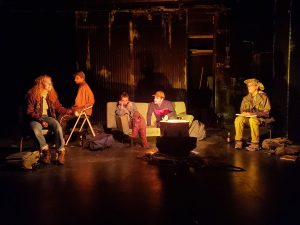
Part of the appeal was the play’s unconventional format. The first act is set in an unspecified moment in the future after an event that has knocked out all power and plunged the country into chaos. The second act is seven years later, and the final act takes place 75 years after that.
“The first act is quite naturalistic, and the second starts to incorporate some elements of sit com acting and commercials, because the characters who meet in the first act form a theater that goes from remote outpost to remote outpost to perform Simpsons episodes. Seventy-five years later, we’re in a completely new theater company that’s turned this episode into a mythic, almost like Medieval pageant play,” she said.
Margid describes that final act as a “mash-up of Greek theater, Medieval pageant play, hip-hop, and music video.”
“It’s jaw-droppingly theatrical. And odd. And I was grabbed by the style, the form and the themes of the piece. I couldn’t predict what was going to happen next in this crazy piece, and I loved that. It was unlike anything I’ve seen before,” she said.
Reimagining Classics for Current Times
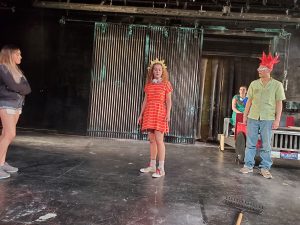
The material will be familiar to anyone with a passing familiarity with the show, but hardcore Simpsons’ fans will be disappointed if they’re expecting a simple live-action re-enactment of Cape Feare. Because it’s set in a time when no one has access to television anymore, recollections are subject to characters’ memories.
“It’s a game of telephone over 75 years. So what you end up with is a memory of a memory of a memory of a memory. The theater company that creates this piece also decides to merge the plot elements with the apocalyptic disaster of the meltdown of nuclear plants that happened 75 years ago when the grid went down,” Margid said.
Just as works of art from the past are reinterpreted with current cultural concerns, so too is Cape Feare transformed into a mythic story about survival, going so far as to replace Sideshow Bob with Mr. Burns, another reoccurring character and owner of a nuclear power plant, as the main villain.
Channeling a Character’s Growth
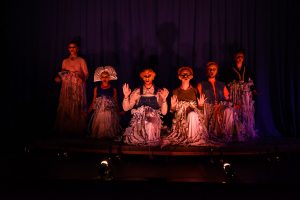
Ella Stoller, a junior at Fordham College Lincoln Center who plays a survivor in the first two acts and a chorus member in the third, studied the play last year in a text analysis class. A big challenge for her is imagining how her character might evolve during the seven-year interlude between acts one and two. The stakes are much higher in the second, and yet at one point, the survivors take a break from rehearsing to debate how many cans of Diet Coke still exist.
“On the page, it’s this hilarious bit. Like, are they really gone? Who knows? But then you dig into it, and like there’s all the subtext about the different relationships and the fact that we’re in Oklahoma, it’s 3 p.m., we’re in a warehouse and it’s 90 degrees. And if we don’t get this show put together by the end of the night, our show tomorrow will fail and we won’t eat and we might not be safe or have a place to sleep,” she said.
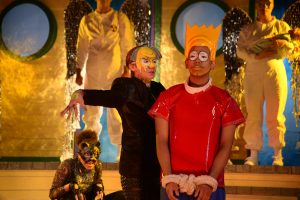
To prepare for their roles, Margid also had two of Stoller’s colleagues watch the episode Homer the Heretic. While they faced the screen, she sat with her back to it, and was only allowed to turn around periodically to watch it, for ten second intervals. The point was to appreciate how fickle memory can be.
“Jenny and Matt got to watch the whole thing, so they had bigger chunks of it, but there were moments where I heard something that they hadn’t picked up on because they were watching it, so I got a word or a phrase or a sound effect that neither of them remembered. That drove forward our act,” she said.
Post Apocalyptic Fashion Trends
Staging is unique to the play as well, especially the clothes and masks used in the third act. Costume designer Siena Zoë Allen, FCLC ’15, worked with Margid in 2016 on the mainstage production of White People, and returned again to work with her alma mater.
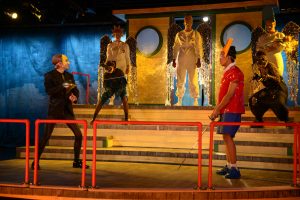
Since there’s no way to know how much of society has been rebuilt 75 years later, it was decided that plastic—in the form of sheets, bags, bottles and wrappers—would be the backbone of their sartorial choices. Suffice to say, there are few manuals for making clothes with that material.
“If you iron a bunch of plastic bags to make a very long sheet of fabric and clothes, it doesn’t behave the way normal fabric should. When you put it on a body, it doesn’t bend, it doesn’t fold, it’s not graceful. So it’s been a very large learning process for all of us,” she said.
“It’s very different than fitting for a normal show, where if pants don’t fit, we can let them out with fabric that already exists. We are in charge of making the fabric, fitting the fabric, and making sure it matches the rest of what’s already been made. We can’t just start from scratch, so we do have to sort of adjust. It’s been fun.”
For Margid, the takeaway from the play is that art in general, and story-telling in particular, is not a luxury, but is in fact deeply entwined with the survival of the human spirit.
“At the absolute core of this piece, is a kind of Valentine to the power of theater to bind us together in dark times and to provide a place for collective emotion and reflection,” she said.
Mr. Burns, A Post Electric Play, runs at Pope Auditorium April 10, 11, 12, 24, 25, 26 at 7:30 p.m. and April 27 at 2 and 7:30 p.m. Tickets are available at the theatre website.
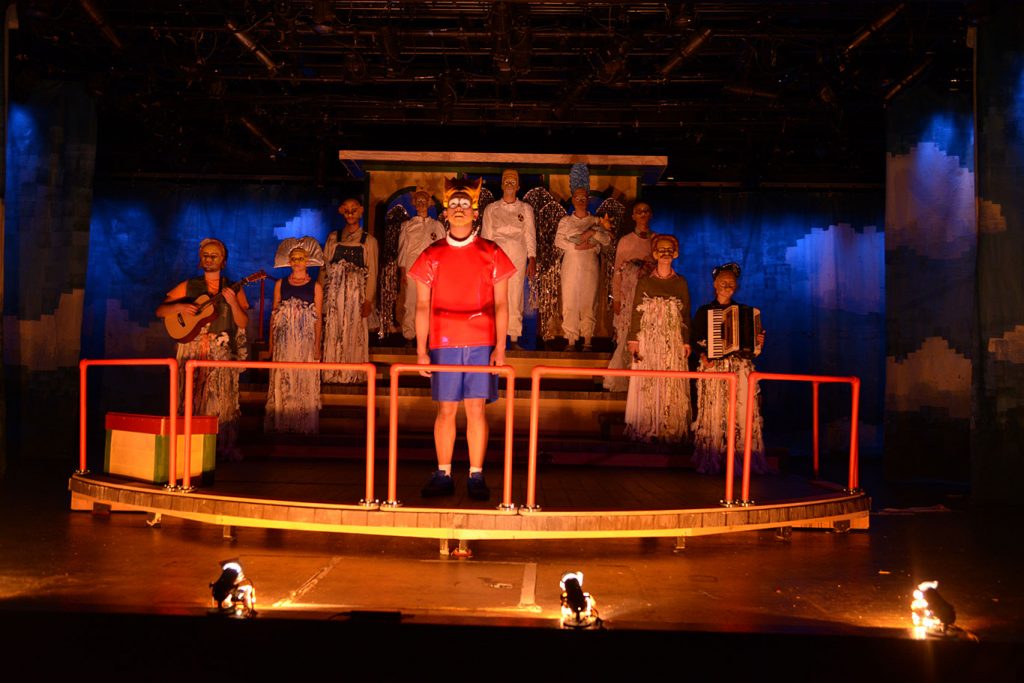
Sheehan received a residency fellowship that is allowing her to do infrared and other photographic processes on a tall ship in the northern latitudes, just off the coast of Svalbard, Norway.
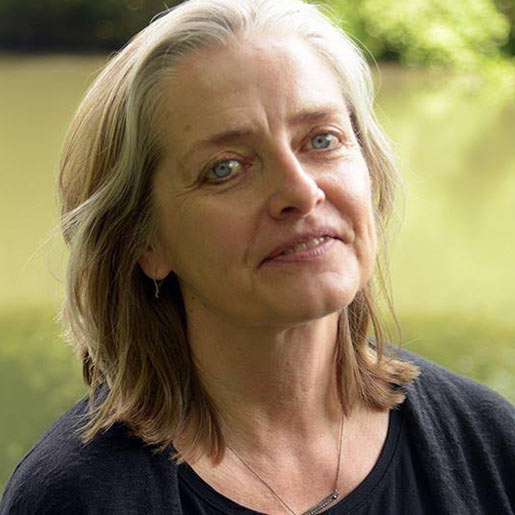
Photo by Tom Stoelker
The residency, sponsored by The Farm Foundation, will bring Sheehan together with scholars, scientists, choreographers,composers, sound designers, a cinematographer, and a children’s book author to collaborate on projects relating to the environment and climate change.
“So much of what we experience in contemporary life is filtered and fleeting,” said Sheehan. “I will use my camera as a drawing tool to look for patterns of light and ephemeral, spectacular moments in landscape,” she said. “I plan to work with micro lenses and infrared photography to show the environment in an engaging, and unfamiliar way”.
For Sheehan, who views her artist’s methods in almost a scientific manner, and whose primary focus is the environment, the collaboration is a perfect fit.
“When I start a project, I like to work in an experimental way with materials, opening the work to new outcomes,” she said. “I’m very excited to be in the arctic, where I’ll have time to push new ideas, collaborate, and collect visual data to use back in the studio.”
Sheehan said she primarily thinks of herself as “someone who draws” but she incorporates “all levels of visual information.” That includes photography, painting, charts, maps, and anything that helps convey “the collaged, compressed experience of contemporary life.”
Focusing on content that highlights the rapidly disappearing ice and snow, Sheehan said she’ll be using photo techniques in a “painterly way,” playing with light, color, and texture. The use of infrared can transform a landscape that is green to appear as if it is pink or white, thus returning a verdant landscape to the color of the ice and snow that once covered it.
Aside from landscapes, Sheehan said she’ll also be making photograms of ice shadows using cyanotype, a blue-toned, early photographic printing process used frequently in the 20th century. As the process uses iron oxide, out of concern for the environment she won’t be developing the prints until she returns to her Brooklyn studio. As with the infrared, the cyanotype photos will also highlight global warming.
“Rather than showing ice melting, they’ll show you absence,” she said. “There are lots of mythic stories of shadows being the soul of something.”
Sheehan expects the overall theme of the work to be about “light, shadow, and ghosts,” themes which she says will allow her to play with the nearly 24 hours of light a day at the Arctic Circle this time of year.
“I use my camera as a drawing tool. I look for patterns of light and ephemeral moments in landscape,” she said. “I hope to bring that sensibility to the arctic.”

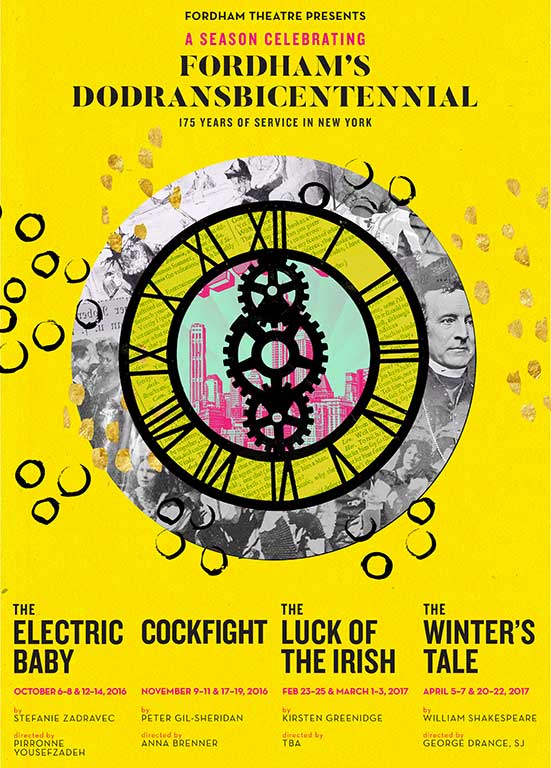 In the pantheon of New York City institutions, Fordham is as ingrained in the city’s fabric as the Metropolitan Museum of Art and fellow Bronxites the New York Yankees.
In the pantheon of New York City institutions, Fordham is as ingrained in the city’s fabric as the Metropolitan Museum of Art and fellow Bronxites the New York Yankees.
It wasn’t always so, though. When Archbishop John Hughes founded what was then St. John’s College in 1941, the school was a haven of sorts in a city that was hostile to Irish immigrants, like him.
This year, in honor of the University’s Dodransbicentennial celebration, Fordham Theatre will perform four plays on its main stage that feature characters who, like Archbishop Hughes, cope with displacement—by creating their own reality.
The four plays that will be staged at Pope Auditorium are:
Electric Baby by Stefanie Zadravec, directed by Pirronne Yousefzadeh
Oct. 6, 7, 8, 12, 13, 14
Cockfight by Peter Gil-Sheridan, FCLC ‘98, directed by Anna Brenner
Nov. 9, 10, 11, 17, 18, 19
The Luck of the Irish by Kirsten Greenidge, directed by Geoffrey Owens
Feb. 23, 24, 25, March 1, 2, 3
The Winter’s Tale by William Shakespeare, directed by George Drance, S.J.
April 5, 6, 7, 20, 21, 22
Theatre program director Matthew Maguire said that the four plays share a comic sensibility; this year, there are no tragedies in the repertoire.
“Since it’s Fordham’s celebratory year, we wanted to celebrate with comedy, but comedy with teeth, and comedy that would be meaningful,” he said.
As is custom, students played a large part in the selections, which were discussed at five forums last year. Maguire noted that Electric Baby was brought to his attention by a student who’d seen it performed at the Two River Theater in New Jersey. The play is about a Nigerian and a Romanian immigrant who shape the lives of the Americans around them.
In Cockfight, a character is displaced both in the literal sense, having fled from Cuba, and in the emotional sense as well, as a gay boy trying to come out in a world dominated by his father’s machismo.
Luck of the Irish is the story of a black family who moves into a white neighborhood through an arrangement with an Irish-American ghost-buyer. They, too, are both literally and emotionally displaced, because they are made to feel that they don’t belong.
And in the classic The Winter’s Tale, Hermione is driven from her home by her husband’s insane jealousy, and Perdita, their daughter, is abandoned in a foreign land at birth.
In addition to striving to bring quality roles to students, Maguire said he also strives to stage plays whose creators are available to collaborate. This season, playwrights Peter Gil-Sheridan and Stefanie Zadravec will be present for rehearsals. As a graduate of Fordham’s theatre program, Gil-Sheridan, who now heads the MFA Playwriting Program at Indiana University, is a true success story, said Maguire.
“Their presence influences the way our students are going to get work down the road, because they’ve been in the room with these working artists. They may think a good role is John Proctor in The Crucible, and of course it is, but for an actor, it’s even better if you get to step into a role for the first time with the playwright,” he said.
“A good role is one where you can change people’s lives. Social justice is what this school is all about, and so our season emanates a sense of social justice.”
]]>“This is a heartbreaking loss, especially for [Goldsteins’] family and loved ones. We have reached out to [Noah’s’] family, and of course will do everything we can to support them in their hour of grief,” said Joseph M. McShane, SJ, president of Fordham.
“It is a terrible blow to lose someone so young and full of promise, and we cannot imagine the pain of Noah’s family and loved ones. I ask that you join me in keeping them in your thoughts and prayers.”
Goldstein, a native of San Jose, California, worked at Ars Nova, a nonprofit theater in New York, as a production intern. Goldstein also worked at the Texas-based Vortex Repertory Theatre and Music & Entertainment Television.
Over the weekend, the Fordham’s theatre program put up a tribute on its Facebook page to the recent graduate, referring to Goldstein using a gender-neutral pronoun, “they.” Friends and faculty noted it was Goldstein’s preferred pronoun.
“They were our best and our brightest. They are gone too soon. Show the other side what great art looks like. Love, The Fordham Theatre Program.”
Goldstein’s focus was on set design, technical direction, production design, and sound design. Goldstein worked on several Fordham theatre productions, among them Oh My Darling, The Man Who Built His House to Heaven, and The Mojo and the Sayso.
After graduating last month, Goldstein landed a job in New York City as a set designer for Lifetime Supply, a show that opens this week at the IRT Theater on Christopher Street.
Tim Zay, Fordham theatre’s technical director, said it was a joy to see Goldstein mature and grow during four years at Fordham. He noted that last April, Goldstein helped the theatre program use, for the first time, computerized moving panels in the mainstage season’s final play, White People.
“[Goldstein] was so full of life, and always finding the humorous part of life. [Noah] was very intelligent, well read, and articulate. I could make obscure references, and [Noah] would pick up on them very easily,” he said. “[Goldstein] was one of these students who came in knowing a good deal, but unlike some who think they know everything and you can’t teach them, [Noah] was open to learning a lot more.”
Kai Brothers, the theatre program’s production manager described Goldstein as a “consummate collaborator, open to exploration, endlessly inquisitive, rigorous in process and able to draw upon boundless reserves of creativity.” He called Goldstein’s stage design work on the play The Man Who Built His House to Heaven “elegantly simple, but really essential.”
“Noah was there during the rehearsal process, the writing process, all the way through,” he said. “Noah was integral to the way that the story took shape on stage.”
Daniel Alexander Jones, head of the theatre program’s playwriting curriculum, called Goldstein one of the program’s best students–“a gifted young artist and magical soul.”
“I will miss our wide-ranging and inspired conversations most of all,” he said.
A Memorial Service for Noah will be held Bellarmine College Preparatory in San Jose, CA in the Leontyne Chapel on Saturday, June 25 at 2 p.m., with a brief reception to follow in Liccardo Hall.
In lieu of flowers, the family asks that those who want to make a memorial gift in Noah’s name can make a donation to Bellarmine Prep, 960 West Hedding Street, San Jose, CA 95126-1215. All donations made in Noah’s name will support Bellarmine’s Theatre Tech Department.
Letters of Condolence may be sent to the Goldstein Family c/o
Fordham University
113 W. 60th Street
New York, NY 10023
Attn: Campus Ministry, LL 217
Plans are underway for a local service. For more information, contact Vincent DeCola at [email protected].
Staff from Counseling and Psychological Services, Campus Ministry, and the Dean of Students Office will be standing by this week to help all who are grappling with Goldstein’s loss.
The Counseling Center can be reached directly at:
Lincoln Center: (212) 636-6225
Rose Hill: (718) 817-3725
Campus Ministry can be reached at:
Lincoln Center: (212) 636-6267
Rose Hill: (718) 817-4500